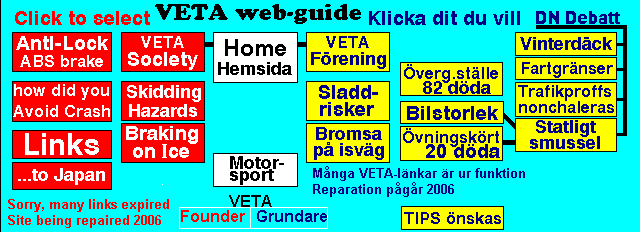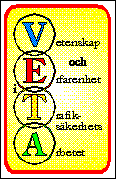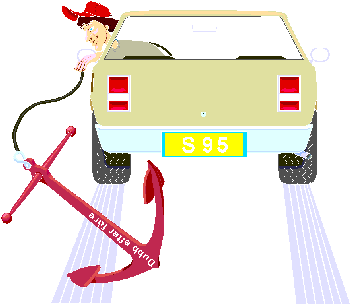The text below is translated from a report in Swedish (summary in English) with 24 figures on 36 pages released at the end of 1995.
Abstract in Swedish: Referat på svenska
An invoice of SEK 100 plus postage will be enclosed.
On the harsh ice track (C), the average deceleration with Used Summer tyres and No ABS was less than 50% of that with New Studded snow tyres and ABS switched on.
In a situation where both cars start braking from the same point, this corresponds to the inferior car having three quarters left of the initial speed where the superior car has stopped completely.
Clicking on the image will enlarge and display it separately for downloading.

The best and the worst braking performance on each track and each session were very different. A time lag of three seconds between the cars would have been sufficient only in three or four out of 66cases, if the best car were to be braked in front of the worst one from 70km/h (44mph). Then, the driver reaction time is assumed to be 1second.
Fifty per cent of the 66cases required a 70km/h queue time lag of more than 7seconds. If differences are similar between individual cars in urban traffic queues cruising at 50km/h (31mph), the gap must be greater than a whole block: 5seconds or 70meters.
Transferred to VETA website with ACKNOWLEDGEMENT
to the Swedish sponsor of the investigation:
Skyltfonden
administered by
Vägverket
at Borlänge
Phone no. +46 - 13 75000

©
Lennart Strandberg
Charter Chairman of the
non-profit VETA society
Email:
l s @ stop . se
To top of page
URL= http://www.veta.se/abs66ice.htm
Access no.
 since August 11, 1996.
since August 11, 1996.
Email on web-related topics:
webmaster @ veta . se
Web-site www.veta.se access no.
 since 30 April 1996
since 30 April 1996




 varying snow/ice surface;
varying snow/ice surface;
 ice surface being polished since no studded tyres were allowed on it (cleaned from snow);
ice surface being polished since no studded tyres were allowed on it (cleaned from snow);
 ice surface made harsh by studded tyres and also without snow.
ice surface made harsh by studded tyres and also without snow.


